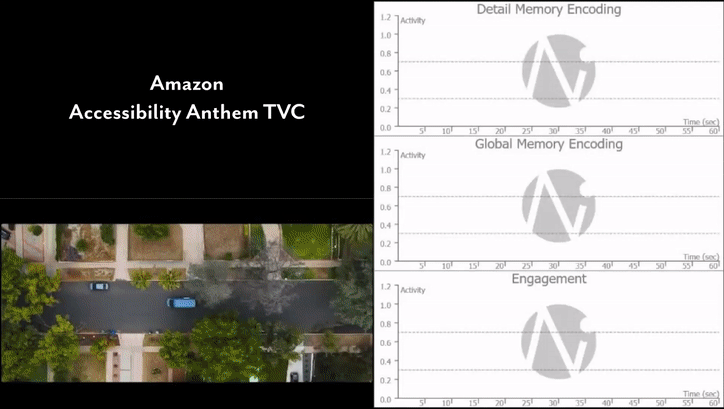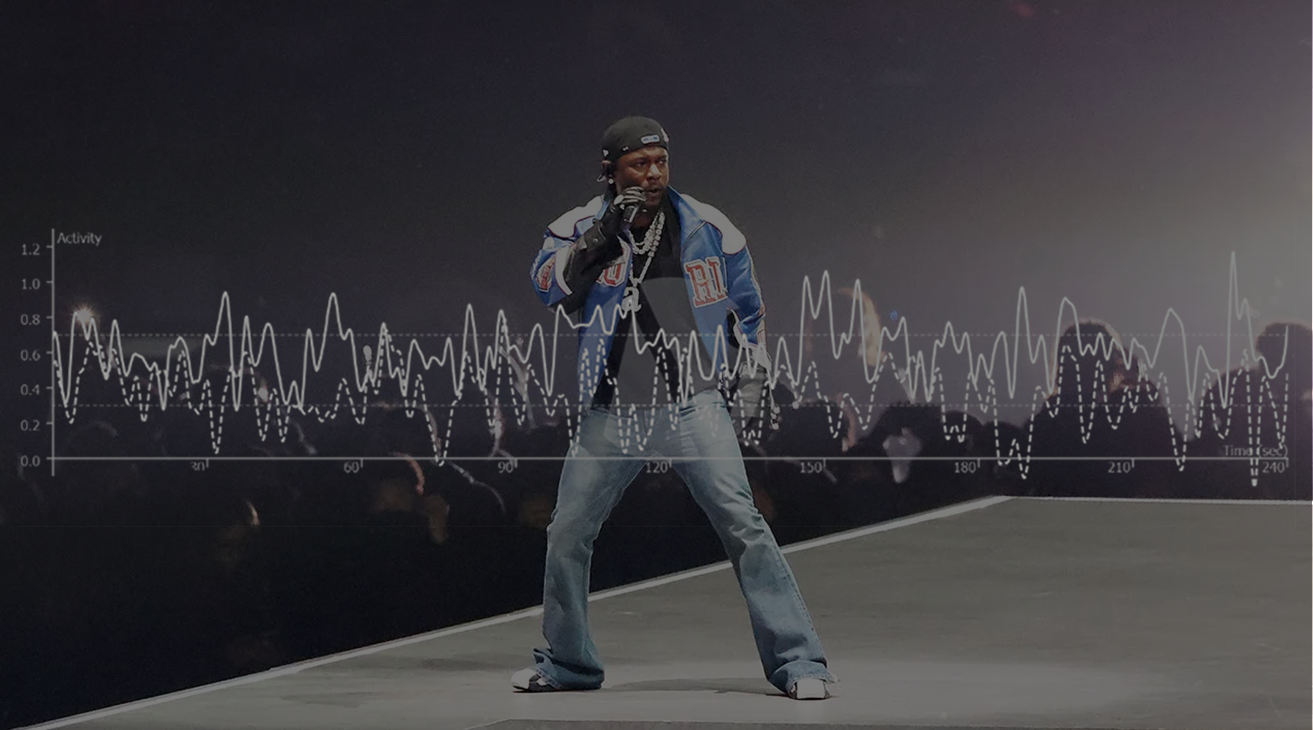
In an era of equality at the forefront of many social justice issues, there has been an awaited societal push for accessibility — the practice of designing products and systems in a way that reduces obstacles and barriers for persons with disabilities. Amazon is adamant that they want to be the world’s most “consumer-centric company” by making its “devices and services accessible to everyone—especially people with disabilities.”
However, no company can claim consumer accessibility without full authenticity. So, at Neuro-Insight, we looked into consumers’ subconscious reactions to Amazon’s recent release — Accessibility Anthem. Do audiences believe in Amazon’s push to make a more accessible future?
To find out, we turned to neuroscience. At Neuro-Insight, we look to the subconscious to see how effectively brands (like Amazon) are able to communicate their message. Our patented technology, Steady State Topography (SST), allows us to measure second-by-second brain responses that breach the conscious and get to the root of human emotion and decision-making.
Our technology allows us to understand precisely what consumers are encoding into long-term memory. Memory matters because what we subconsciously decide to store in memory today becomes the base for our decision-making in the future (it is a predictive measure). As we explore what consumers are encoding into memory, we also look to the brain to tell us why a particular event or message is being stored – for this, we leverage key diagnostic metrics including approach/withdrawal, emotional intensity, and engagement.
So, in our analysis of subconscious reactions to Amazon’s Accessibility Anthem we found two things:
1) Amazon and Accessibility are Successfully Linked
Throughout the ad, notice how both global and detail memory averages are high (generally above 0.7). Global memory encoding is the active storage of thematic elements like narrative structure, visual style, and music. Viewers might remember scenes and creative elements from the ad.
Detail memory encoding measures the consumers’ processing of detail elements (think key messaging, branding, call to action, etc.). High scores indicate consumers are actively storing this information into the subconscious (which correlates to a high likelihood of future action).
To understand the lasting effect of an ad’s message, we look at end branding (a detail element). During the final second, Amazon’s logo fills the screen and detail memory encoding is high. There is a strong link between narrative and end branding and viewers leave the ad successfully linking the theme of accessibility to the Amazon logo.
2) Key Events Trigger Greater Memory Encoding
As mentioned before, long-term memory encoding is our predictive measure: if you encode a message, a moment, an element into long-term memory, your future behavior will be influenced. But, it is often specific event triggers that help us diagnose why an ad may / may not be memorable.
Two accessible features provide insight by acting as event triggers for greater memory encoding. The first is the Show and Tell feature available on the Echo device that identifies products to assist chefs with vision loss. A spike in global memory during this scene indicates that consumers are excited by this feature… and if you were to ask them what they remember from this ad, it might be the girl asking Alexa to identify the can.
Next, Amazon gets relatable with a comment about binge-watching TV. High levels of engagement (which indicate whether or not a moment is personally relevant to a viewer) make for another memorable moment. Amazon showcases Prime Video’s feature of audio-described shows and movies so that anyone and everyone can binge TV.
According to our four–value model of subconscious motivation (power, autonomy, unity, and sustainability), it is not enough to preach accessibility, you must incorporate accessibility into your core brand values in an authentic way. It is necessary that companies push to create a more accessible now and a more accessible future for the one billion persons with disabilities worldwide. Amazon’s Accessibility Anthem showcases how Amazon is working to execute that mission; but, is their effort trusted? Are these efforts derived from a place of authenticity? Do consumers feel like Amazon is being authentic in its claims? Our neuro data says yes.











